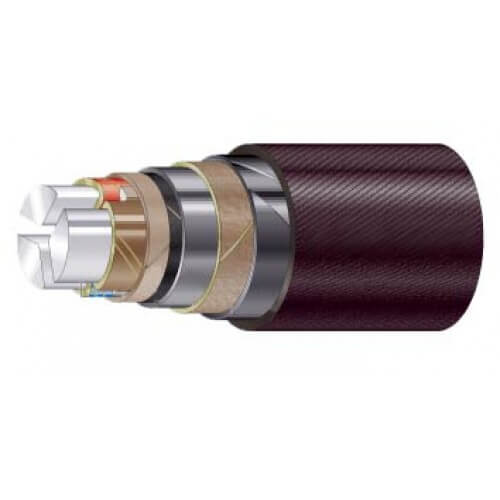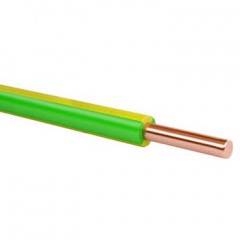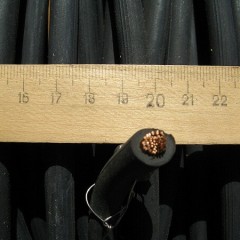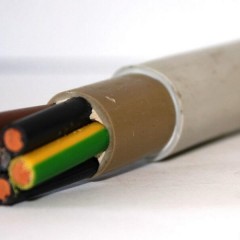ACB Power Cable Specifications
Design
Power cable type ASB has the following design:
- aluminum conductors, can be round or sector-shaped, multi-wire and single-wire;
- type of insulation (including belt insulation) - paper impregnated with a viscous composition;
- lead sheath;
- a pillow made of bitumen, crepe paper or polyethylene terephthalate fibers;
- reservation - steel tapes;
- outer cover - bitumen and fiberglass;
- core cross section from 35 to 240 mm2;
- core marking can be color or digital (from 1 to 4).
You can see the design of the cable of the power brand ASB in the photo below:
terms of Use
The main technical characteristics of the ASB cable are:
- Operating voltage 1, 6 or 10 kV.
- AC frequency 50 Hz.
- The operating temperature is from -50 to + 50 ° C, while the maximum permissible value is + 70 ° C if the rated voltage is 10 kV and + 80 ° C for a cable rated for 1 or 6 kV.
- The maximum heating temperature of conductive conductors in case of short circuit: + 200 ° С, with overload mode - + 90 ° С.
- Installation is allowed at a temperature not lower than 0 ° C.
- The minimum bending radius is 25 outer diameters for single-wire conductors and 15 for multi-wire.
- The resistivity of conductive conductors per 1 km of cable length at a temperature of + 20 ° C is not less than 29.11 Ohms for single-wire conductors and not less than 29.4 Ohms for multi-wire.
- The specific insulation resistance per 1 km of length at a temperature of + 20 ° С is at least 100 MΩ for an ASB cable rated for 1 kV and 200 MΩ for 6 and 10 kV.
- Service life 30 years.
Such technical characteristics of the ASB cable, such as weight and outer diameter, we examined in detail in the table:
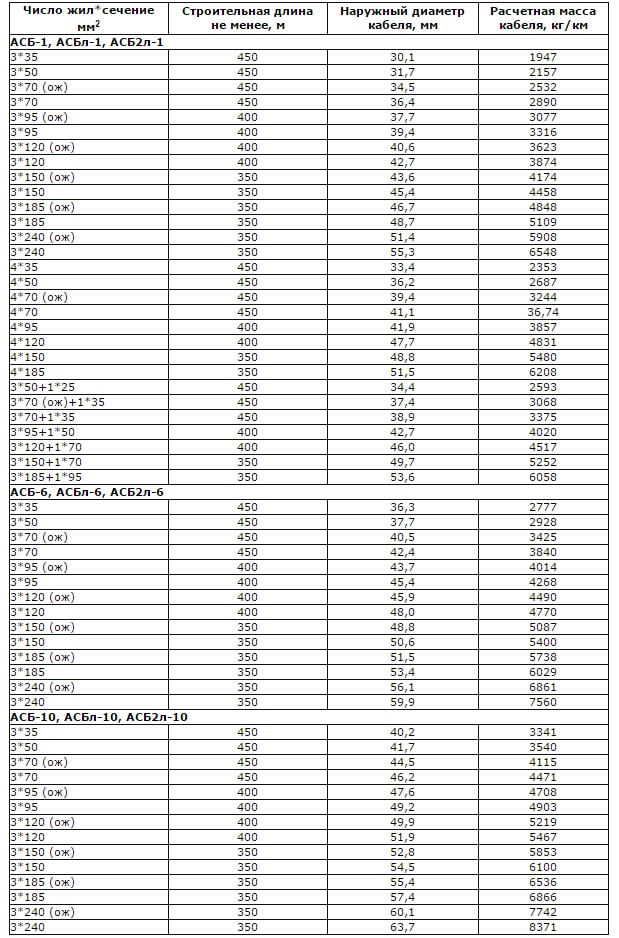
Application area
The main purpose of the ASB cable is the transmission of electrical energy in stationary installations of electric networks with a working voltage of 1, 6 and 10 kV. An armored conductor can also be used to transfer electricity to DC networks. Most often, an ASB type power cable is used when ground wiring.
We draw your attention to the fact that the soil should have low or medium corrosive activity when using grades of ASB and ASBL. With high corrosive activity, it is necessary to use the ASB2l brand. This is the main difference between several types of cable.
An important condition for the operation of the conductor - when laying it should be absent stray currents in the ground, as well as the cable must not be subjected to stretching.You can see how the conductor is laid in the video below:
The most popular marking sizes of ASB power cable are 3x70; 3x95; 3x120; 3x150; 3x185; 3x240 ;. If you are looking for an analogue of a conductor, it is better to choose brands with names such as TsASB or ASBShv.
As for manufacturers, the most reliable manufacturers today are manufacturers such as LLC Kamkabel, ZAO Kavkazkabel, ZAO Plant Zavod Moskabel and LLC GK Sevkabel.
It will be interesting to read:

